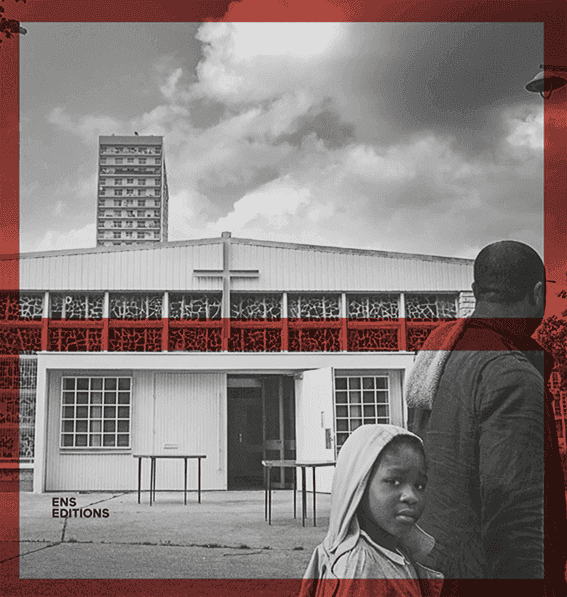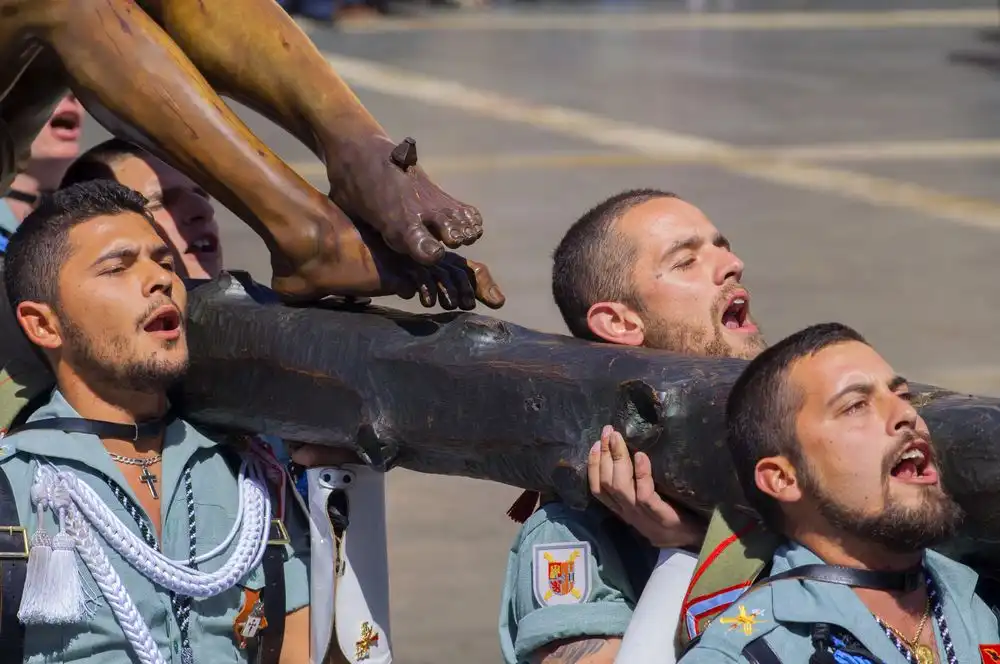Home>Religion and Social Class.

12.06.2023
Religion and Social Class.
Interview with Juliette Galonnier
Juliette Galonnier, Assistant Professor at CERI/Sciences Po, has recently coedited Religions et classes sociales (Religion and Social Classe) with Anthony Favier, Yannick Fer, and Ana Perrin-Heredia (ENS Editions, Sociétés, Espaces, Temps, 2023). This collection of eleven qualitative surveys renews a field of study that has been neglected during the last few decades. Juliette answers our questions on the reason for this neglect, and on the links between religion and social class. Read the interview.
Can you tell us how the book is structured and how the different chapters fit together?
Juliette Galonnier: This book brings together eleven qualitative studies covering a wide range of religious traditions and social groups, using interviews, ethnographic observations, archives, and maps. Through their attention to detail and their use of thick description, each of the chapters explores numerous facets of the links between religion and social class, so much so that it was not easy to fit them into an orderly table of contents! However, it seemed to us as editors that three main themes stood out, constituting analytical phases in the understanding of the relations between religion and social class, and giving us the three main parts of the book.
The first part is devoted to the construction of social groups and the role played by religion and social class in shaping the boundaries between and within groups: it unveils interesting overlaps between religious affiliation and class affiliation (as in the case of Catholic workers and Protestant employers in a town in southern France), as well as reflections on the small-scale internal differentiation that religion makes possible within social classes.
The second part of our book looks at how the relationship between religion and social class can reinforce mechanisms of domination or, on the contrary, encourage moments of indistinction and the (temporary) suspension of social order. In particular, we learn how disdain for popular religious practices can serve to reinforce dominant class positions (as among Argentine elites), or how the struggle to define the “right religion” often intersects with class struggles (as among French Muslim youth).
The third part focuses on the intersection of religion and class at the level of individual trajectories, exploring in even greater detail the social mobility made possible by religion (as in the case of Catholic officers in the French army), as well as the dissonances, contradictions, and misalignments that inevitably appear in these trajectories.
These three dimensions are of course always closely interwoven in real life, and they run through each of the book’s contributions, but we hope that the way we decided to organise the chapters will enable readers to better grasp the complexity of the entanglements we are highlighting between religion and social class.
Why is there so little, if any, literature on the links between religion and social class?
It would be wrong to say that there are very few studies of this kind, because the question of the relations between religion and social class has long been a classic in the social sciences, from Marx to Weber, via Durkheim, then Bourdieu and others. Yet, it is clear that these questions have been neglected in recent decades.
It is not always easy to know why and how certain subjects disappear from academic attention, but we can put forward a number of hypotheses, mainly to do with disciplinary specialisations and a lack of dialogue between researchers working on religion and those working on social class. The former have perhaps tended to attach too much importance to the processes of individualisation of belief or to the irreducibility of religion, which may have led them to neglect the social determinants of religious affiliation. They have also, quite rightly, focused on the interaction of religion with other social categories, such as gender, migration, ethnicity, and race—to the detriment of class. Researchers in the latter group have perhaps suffered from a feeling of illegitimacy or discomfort in tackling the religious objects that have unexpectedly appeared in their fields, where theories of secularisation had predicted their disappearance. The paucity of quantitative data on religious affiliation and practice also undoubtedly contributes to this neglect.

Are there social determinants of religion?
This book is an invitation to always bring the social in the study of religion, in other words to avoid a very contemporary tendency to make religion overly visible or to interpret religion solely in religious terms: we are not satisfied with the perception of an omnipotent religion that would be the only explanatory matrix for believers’ worldviews and ways of acting. This may seem trivial, but we felt it necessary to point out that those who are often referred to as “Muslims” are not only Muslims, but also students, blue-collar workers, lawyers, employees, people with upward or downward social mobility, etc., and that these characteristics structure their relationships with the world just as much, if not sometimes more, than their religious affiliation. Similarly, Catholicism was not the only driving force behind the “Manif pour tous”,(1) which was also structured by more traditional principles of commitment (class interests, logics of distinction, etc.). Some of the chapters in the book show that practices often understood as religious (such as wearing the veil) can also be explained by the social stratification of those who practice them.
However, our book does not adopt a deterministic view of religion, in the sense that social class systematically “predicts” ways of believing or practising religion. The finesse of the qualitative surveys highlights misalignments, areas of friction, small dissonances between religious affiliation and class affiliation, which show that we must never give in to over-simplistic interpretations of the links between certain social positions and certain religious forms. The interaction between religion and social class should not be taken for granted, but rather seen as resulting from a process of adjustment.
How does religion impact social mobility trajectories?
This is an empirical question to which no general answer can be given and that needs to be explored at the level of each field study. The book shows how in some cases religion accompanies social mobility trajectories. For example, the chapter on upwardly mobile female Muslim students in France shows how they come to practise an increasingly scholarly and book-based Islam, which sets them apart from their co-religionists from working-class backgrounds. Religion can also directly promote social mobility: the academic success of these same students is also linked to their early incorporation of religious dispositions (a taste for reading in particular), which are then converted into social resources in the school context. In the chapter devoted to French army officers, the author shows how having a well-adjusted religious culture (in this case Catholic) leads to better integration into the professional corps and forms of promotion. Religion can also foster careers, as shown in the chapter on the Gülen movement, in which Turkish believers from rural Anatolia become international religious leaders who go to live abroad to spread the movement’s message. However, any duty to the religious institution is fraught with risk: for example, the repression of the Gülen movement has led to brutal forms of downward mobility for these followers, who find their faith sorely tested by social downgrading. In other cases, such as the Lubavitch Orthodox Jewish movement, respect for strict religious rules can also prevent forms of social mobility, particularly by restricting professional horizons. Here again, there is no single answer.

What role, if any, does religion play in the reproduction of class inequalities?
This edited volume acts as a sort of guide for research on this aspect too, reminding us that we need to pay close attention to these questions during the course of investigation, because it is by no means possible to determine from the outset whether religion contributes to reinforcing or attenuating the logic of social hierarchisation. Several chapters highlight the role of religion in naturalising class inequalities, such as the theology of prosperity in Guatemala, which reinforces the feeling of divine election of the upper classes, or the message of the Kabbalah Centre, studied in another chapter, which reinforces the statutory self-assurance of socially successful people (like the London trader who marvels every day at the doors that “miraculously” open for him) while inspiring a discourse of resignation in others. On the other hand, religion can play a more subversive role (liberation theology or forms of popular religion spring to mind), but it is often ambivalence that prevails, as we see very clearly in one of the chapters devoted to a Bulgarian village where Muslims and Orthodox Christians live side by side: where relations of domination, class, and gender may be reinforced by religion, there are other times when religious rituals bring all the inhabitants together, times when the social order is put on hold. All these nuances are explored in the book, which opens up a promising field of research into the conditions under which class hierarchies are produced and reinforced (or not) by religion.
So what changes does the book show, in the relationship between religion and social class?
As we said, the book explores the way in which religion helps to produce and consolidate social boundaries, and the way in which class affiliations influence the formation and structuring of religious groups.
In the chapter devoted to affluent neighbourhoods in the Paris region, we clearly see how belonging to the upper classes is cemented by involvement in the local Catholic parish. However, the book also invites us to pay attention to all those moments and situations where boundaries are shifting and evolving, particularly when religious groups diversify socially. The chapter on the Lubavitch movement in France, for example, shows how this movement, which initially recruited from the working classes, is now attracting people from increasingly affluent backgrounds. By adapting to the social positions of its new followers, it is reformulating its message and, in so doing, transforming itself. Here again, this opens up a very fertile field of investigation: are we witnessing an “orthodoxisation” of new segments of the population or a watering down of orthodoxy as it spreads into new social circles?
There have also been changes in the way in which religion is categorised. The ways in which religious currents are categorised in a more or less depreciatory way evolve according to their social makeup. In the chapter on Côte d’Ivoire, the author shows how, for a long time, Islam was described as the religion of the poor, before influential members of the French-speaking elite decided to reinvest the Islamic tradition and succeeded in giving it a new legitimacy. So what religion does to class, and what class does to religion, is never completely set in stone…
Interview by Corinne Deloy.
English version by Miriam Périer and Caitlin Gordon-Walker
Photo: cover of Religions et classes sociales (Anthony Favier, Yannick Fer, Juliette Galonnier, Ana Perrin-Heredia, dir.), ENS Editions, collection Sociétés, Espaces, Temps, 2023.
Notes
- 1.La Manif pour tous, now called Syndicat de la famille, is a French political movement founded in 2012 that organised large demonstrations and actions in opposition to laws enabling same-sex marriage and child adoption by same-sex couples in France.
(credits: ENS Editions)
Follow us
Contact us
Media Contact
Coralie Meyer
Phone : +33 (0)1 58 71 70 85
coralie.meyer@sciencespo.fr
Corinne Deloy
Phone : +33 (0)1 58 71 70 68
corinne.deloy@sciencespo.fr
